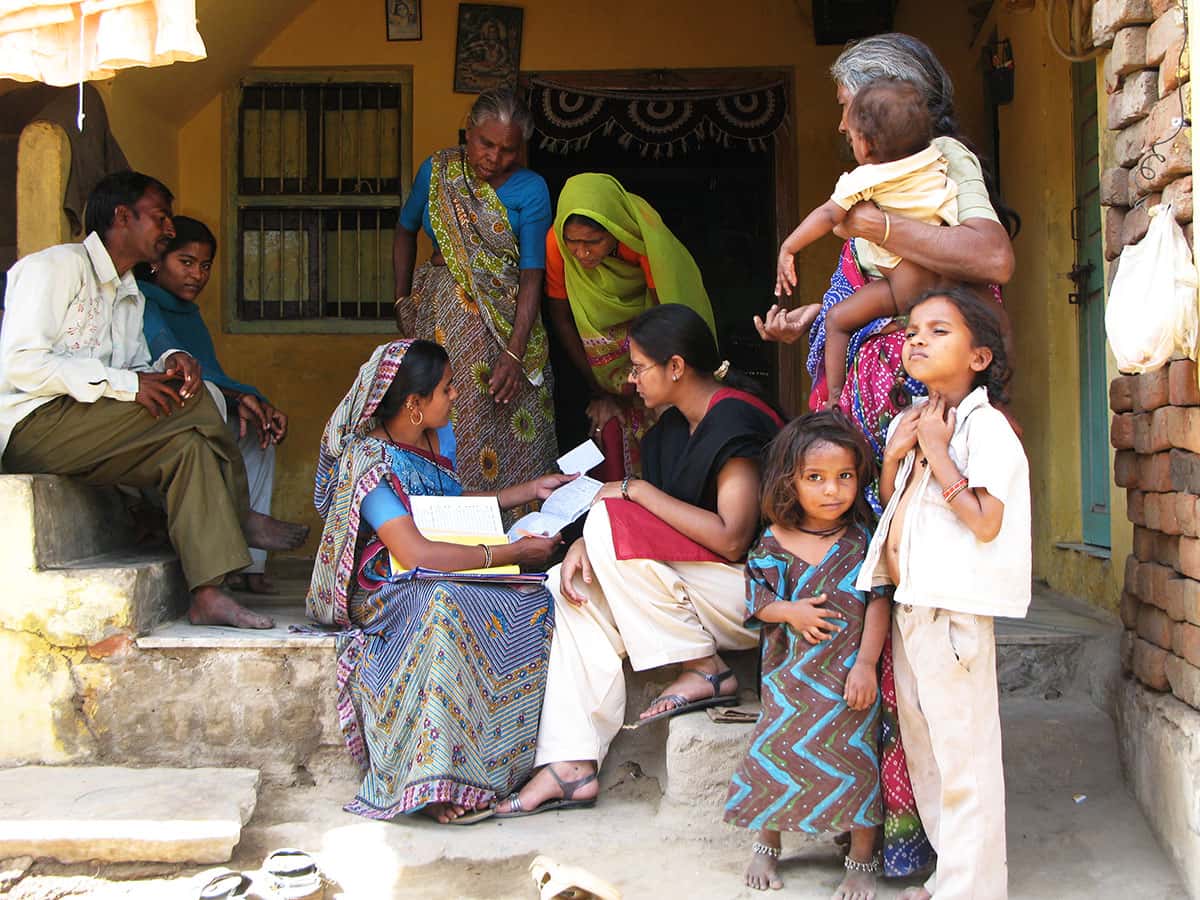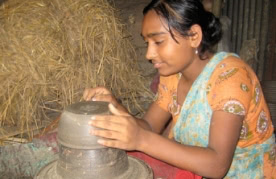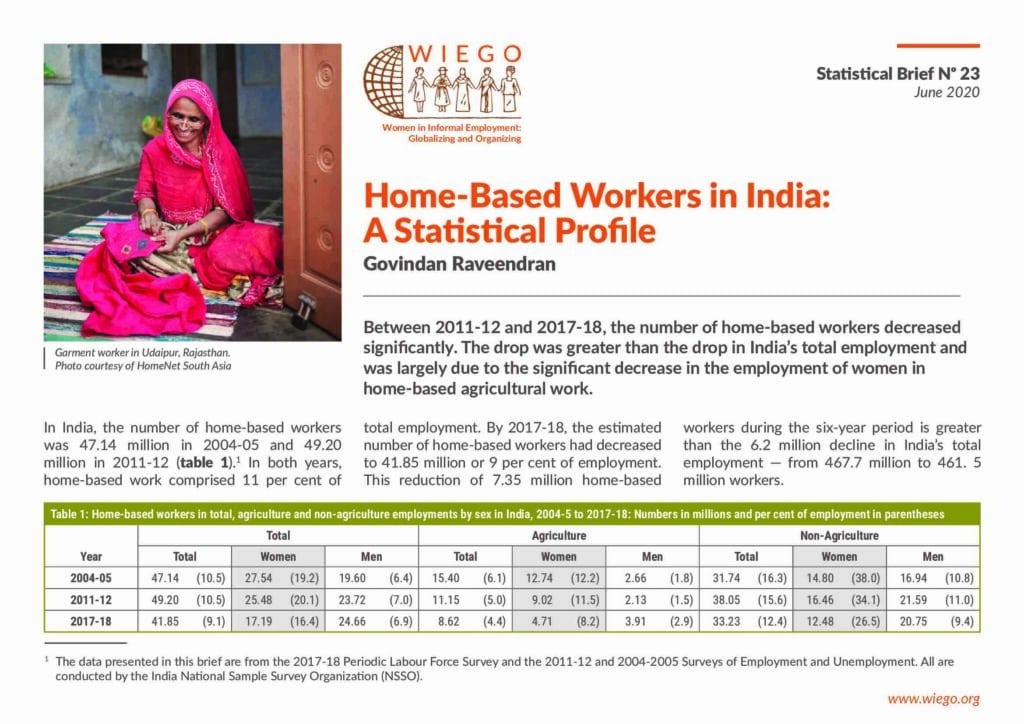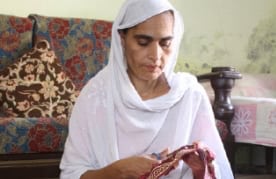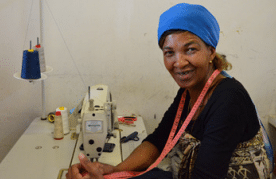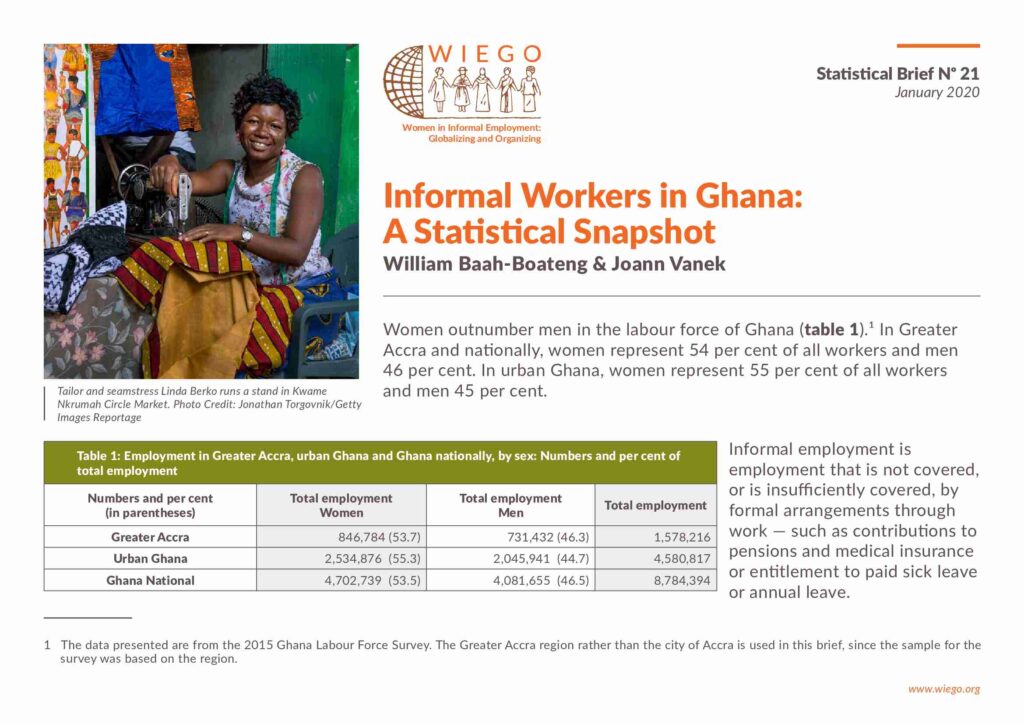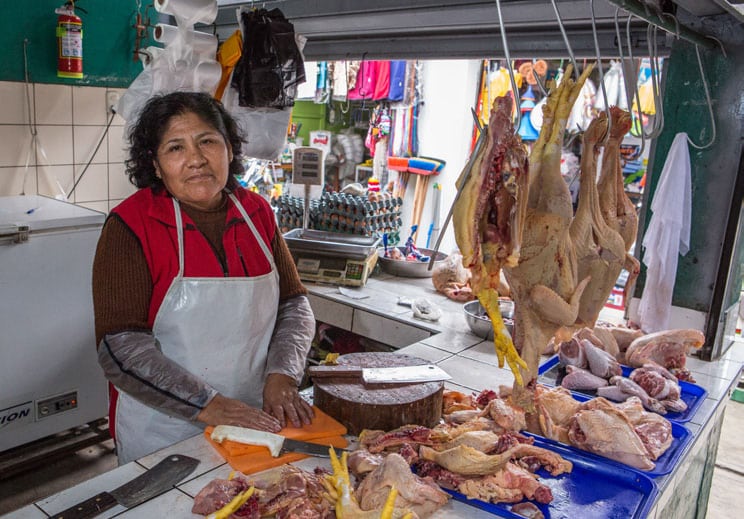From the beginning, WIEGO recognized that statistics were needed to draw public and policy attention to the size and contribution of the informal economy and the situation of women and men in it, and therefore it placed the development of these statistics on its agenda. The review and an accompanying visual timelines trace the development of these statistics, with a focus on WIEGO’s role in developing the concepts, in increasing the number of countries collecting data on the informal economy and in disseminating data in formats accessible to a wide group of users.
Developing Concepts and Definitions
The first time the informal sector was featured as a major agenda item in an international conference was at the 1991 International Labour Conference. In 1992, the ILO Bureau of Statistics prepared a report called “Statistics on Employment in the Informal Sector” as the basis for discussion at the International Conference of Labour Statisticians (ICLS) the following year. The 1993 ICLS adopted an international statistical definition of the “informal sector” that, subsequently, was included in the revised international System of National Accounts. To fit into the framework of the System of National Accounts and provide for a separate accounting of Gross Domestic Product (GDP) in the informal sector, the definition was based on characteristics of production units or enterprises rather than of employment relationships (see Resolution Concerning Statistics of Employment in the Informal Sector).
To further work on statistics on the informal sector and informal employment, an international expert group on Informal Sector Statistics was formed in 1997 by the United Nations Statistical Commission. As the statistical system of India was the host for this group, it was called the Delhi Group. The Delhi Group invited both statisticians and user groups such as WIEGO and SEWA to participate in its expert group meetings. The meetings of the Delhi Group provided an international forum to exchange experiences in the measurement of the informal sector and informal employment, document data-collection practices, including definitions and survey methodologies and recommend measures for improving the quality and comparability of informal sector statistics. The Delhi Group, the ILO Department of Statistics and WIEGO collaborated on the preparation of Measuring Informality: A Statistical Manual on the Informal Sector and Informal Employment. The manual provides practical guidance on each stage of the survey process, from designing and conducting a survey to tabulating and disseminating data. A final chapter is on the use of data on the informal sector and informal employment for national accounts statistics.
In 2003, the United Nations Statistical Commission called for an update of the 1993 System of National Accounts to address new developments in the economy, advances in methods and evolving user needs. For the first time, Volume 2 of the System of National Accounts 2008 contains a chapter entitled “Informal aspects of the economy". This chapter argues that statistics on the informal sector have an important role in the preparation of a country’s national accounts. Direct survey data on the informal sector provide an improved basis for estimating the relevant parts of production that takes place in households and a more exhaustive measure of Gross Domestic Product (GDP) than the indirect estimates that were used. The chapter is an important step toward the preparation of estimates of the contribution of the informal sector to GDP and the preparation of satellite accounts on the contribution of informal employment, both in the informal sector and outside the informal sector, to GDP. Such estimates are implemented in Mexico as part of the preparation of the country's national accounts. The National Institute of Statistics and Geography (INEGI) has prepared estimates of the informal economy in Mexico’s GDP for the years 2003-2021. They show the contribution of both the informal sector and informal employment to the Gross Value of Production in the country.
From its inception, WIEGO recognized the need to revise the International Classification of Status in Employment (ICSE-93) – a major international classification of employment statistics that focuses on work relationships. A variety of new and increasing contractual arrangements, as well as longstanding ones, were leading to uncertain boundaries between self-employment and wage employment – the major distinctions in the ICSE-93. The efforts of WIEGO and others led to the call for the revision of ICSE-93 to be taken up at the 20th ICLS. To outline WIEGO’s concerns and possible contributions to the revision process, WIEGO prepared “Considerations for Revision of the ICSE-93” in 2015, later published as WIEGO Statistical Brief No. 17. A tripartite working group was established and charged with developing a proposal for a revised classification. WIEGO became part of this working group, the only NGO represented on it.
In participating in drafting a revision, WIEGO had five priorities:
- better reflection of categories to identify home-based workers in the classification;
- a separate classification category for dependent contractors;
- a clear definition and categories of employment arrangements for domestic workers;
- the identification of sub-categories for employees; and
- priority on place of work as an essential cross-cutting variable. All of these objectives were achieved when the ICLS approved the new ICSE-18 on 19 October 2018.
Beginning in 2019, the Statistics Programme participated in the multi-year ILO tripartite working group to review concepts and statistical standards on informality, and prepare recommendations for approval at the 21st International Conference of Labour Statisticians (2023). This review was needed to align the conceptual framework of informality with the 19th ICLS framework of work statistics and the 20th ICLS International Classification of Status in Employment (ICSE-18), as well as to support harmonization of data across countries, including developed countries. WIEGO’s participation was to ensure that informal workers’ employment and WIEGO’s concerns were represented in recommendations.
The sub-groups addressed:
- criteria for classifying dependent contractors (ICSE-18 new sub-category);
- development of an indicator framework for informality for national reporting; and
- addressing the “threshold of market production & subsistence foodstuff producers” (consequence of the 19th ICLS redefining “employment” as work for the market only).
The team also participated in the ILO Technical Advisory group to Engendering Informality, an initiative supporting the integration of gender in the statistical standards on informality as well as in the guidance and tools for their implementation. A project paper – Engendering Informality Statistics – singled out WIEGO as a “leader in the work to improve gender data on informality” and cited WIEGO’s work throughout. The 21st ICLS meeting inOctober 2023 adopted a resolution that updated and improved measurement standards on the informal economy, including criteria for the classification of dependent contractors and contributing family workers, as well as an indicator framework for national reports to assist countries in assessing the impacts of formalization policies.
Learn more about Statistical Concepts, Definitions and Methods
Learn MoreIncreasing the Number of Countries with Data on Informal Employment
During the 1990s, countries in addition to India undertook major initiatives to collect data on the informal sector and informal employment. For example, Brazil, Mali, Mexico, South Africa, Tanzania and Türkiye developed surveys to measure the informal economy. In the case of South Africa, the effort to better measure the informal economy was part of a larger effort to develop the post-apartheid national statistical system. For Mexico, the effort to better measure the informal economy was part of monitoring the impact of the North American Free Trade Agreement (NAFTA) and on-going privatization of the economy. For summaries of findings from these two efforts, see Chapter 3 (p. 33) of the first edition of Women and Men in the Informal Economy: A Statistical Picture.
By providing technical assistance and training to countries, the ILO Department of Statistics, in cooperation with ILO field offices, has contributed to increasing the number of countries that regularly collect and disseminate data on employment in the informal sector and informal employment. Another initiative, led by the Institute for Research and Development in France, increased the number of countries collecting data on the informal sector, especially in West Africa. In addition, two projects – Interregional Cooperation on the Measurement of Informal Sector and Informal Employment, coordinated by the UN Economic and Social Commission for Asia and the Pacific (ESCAP), and a project of the Asian Development Bank (ADB) – were undertaken to improve the available data, especially in Asia. The surveys in the ESCAP-coordinated project were done in the Philippines, Mongolia and Sri Lanka, and the ADB surveys took place in Armenia, Bangladesh and two provinces of Indonesia.
A project on Informal Employment, Poverty and Growth in India and China, which WIEGO helped initiate, contributed to the collection of data on informal employment and employment in the informal sector through the China Urban Labour Survey that was carried out in six cities in China. The survey was directed by the Chinese Academy of Social Sciences working with the city offices of the National Bureau of Statistics of China and coordinated by an international advisory committee with members from the ILO, the World Bank and WIEGO.
Four training courses for Asian countries have been held in Chiba, Japan, organized by the Statistical Institute for Asia and the Pacific (SIAP), a regional institution of ESCAP, in collaboration with the Statistics Division of ESCAP, ILO, WIEGO and Japan’s Ministry of Internal Affairs and Communications Participants are from national statistical services and labour ministry officials. These were held in 2015, 2017, 2023 and 2024.
Dissemination of Statistical Data
The use of statistics on the informal economy by a wide set of users – ranging from researchers and policymakers to advocates and organizations of informal workers – requires that data are made available in different formats. This includes micro-data sets and databases for researchers, concise reports for policymakers – and targeted briefs focusing on specific groups of workers for advocates and organizations of informal workers.
In 2002, the ILO published the first international compilation of statistics on the informal economy with estimates for developing regions and the best available data on two groups of informal workers – street vendors and home-based workers. The report, Women and Men in the Informal Economy: A Statistical Picture, was prepared by a WIEGO team to support the General Discussion on Decent Work and the Informal Economy at the 90th Session of the International Labour Conference in Geneva in 2002.
In 2013, ILO published the second edition of Women and Men in the Informal Economy: A Statistical Picture,, again a collaboration between ILO and WIEGO. It featured national data in the ILO-WIEGO Database on the Informal Economy, another outcome of the ILO and WIEGO collaboration. Estimates of the informal economy in developing regions was also published as a WIEGO Working Paper, Statistics on the Informal Economy: Definitions, Regional Estimates and Challenges.
The third edition of Women and Men in the Informal Economy: A Statistical Picture, published in 2018, was prepared by the ILO with technical advice from WIEGO. It advances the field in several important ways. For the first time:
- statistics on the informal economy are presented at the global level, based on developed as well as developing countries and agriculture as well as non-agricultural sectors;
- a common set of criteria were used to measure informal employment inside and outside the informal sector; and
- microdata from over 100 countries were processed to produce the national, regional and global estimates.
To make these estimates accessible in a user-friendly format to a wider audience, ILO and WIEGO collaborated on the publication of Women and Men in the Informal Economy: A Statistical Brief. WIEGO also produced the key statistics and statistical messages in a pamphlet, Counting the World’s Informal Workers: A Global Snapshot. Two briefs on groups of workers were also prepared jointly by WIEGO and the ILO: Domestic Workers in the World: A Statistical Profile and Home-based Workers in the World: A Statistical Profile.
Statistics on the size, composition, contribution, and other dimensions of the informal economy
Browse our Statistical PictureKey Developments in Improving Data on Informal Employment
Two developments have been key in improving data on informal employment and its dissemination. First, the 2030 Agenda for Sustainable Development includes informal employment as an indicator of Goal 8: “Promote sustained inclusive economic growth, full and productive employment and decent work for all”. The specific indicator 8.3.1 is the Proportion of informal employment in total employment by sex and sector.
The second is ILOSTAT, the ILO main data portal. ILOSTAT contains data from yearly or quarterly labour force surveys or similar household surveys for 147 countries. These data provide for the identification of workers in informal employment in ILOSTAT's microdata sets. Based on these data, ILO publishes statistics on the extent of informal employment, the categories of workers most exposed to informality and the characteristics of those in informal employment and their working conditions compared to those in formal employment. The most recent publication is the 2023 Women and Men in the Informal Economy: a Statistical Update.
Given the urban focus of much of WIEGO’s work, the development of city-level statistics on informal employment and on groups of urban workers – domestic workers, home-based workers, market traders and street vendors, and waste pickers – is a high priority for WIEGO and worker organizations
The WIEGO Statistical Brief series not only covers the methodological topics outlined above but also provides statistics in accessible formats on informal employment and specific groups of informal workers. Some of the briefs present statistics at the regional level while others present data at the country, urban and city levels. The production of these briefs has largely been in response to requests by organizations and regional and global networks of workers in informal employment and also by the WIEGO Urban Policies Programme and Focal Cities teams.
Timeline of Statistics on the Informal Economy
This timeline (1997-2024) outlines key developments in the field of informal employment statistics. It details WIEGO's foundational role, major publications, and collaborative efforts with the ILO and other entities. The timeline emphasizes advancements in measuring informal employment, with a focus on gender-specific data and global statistical standards.
More Statistics Publications
Learn More About WIEGO’s Statistics Programme
The Statistics Programme works with statisticians and data users (including workers in informal employment) to improve statistical methods that will make visible the size and significance of the informal economy and the situation of those working in it, and shares the data in accessible formats.
Learn More